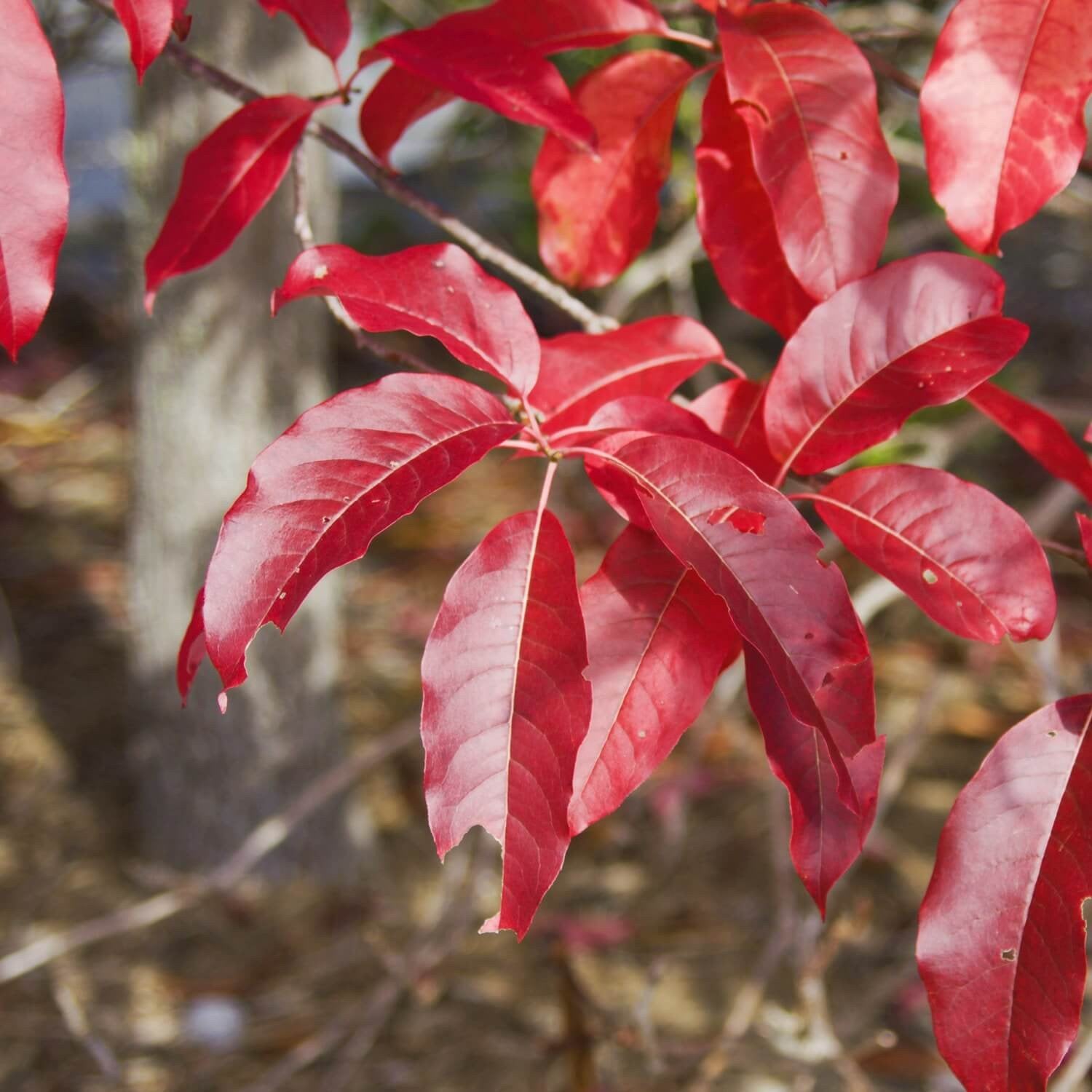Sourwood

Sourwoods cannot be shipped to AK and HI due to state restrictions.
About
A medium-sized tree, the Sourwood shines in the Summer and Fall. Its midsummer flowers appear like lilies-of-the-valley, are highly fragrant and contrast nicely against the green foliage. Then in the Fall, leaves turn intensely beautiful shades of brilliant crimson, purplish-red and sometimes yellow. This tree shines in landscaping as a specimen in a lawn, a garden feature, an ornamental addition to larger trees or a clump in a large, open space. And for honey lovers, the sourwood offers an additional bonus. Honey produced from the flowers of this tree is considered by many to be unmatched by clover, orange blossom, fireweed or any other honey. It has few pest or disease problems and is easily treated for the ones it does encounter.
Wildlife
Deer browse sourwood twigs and leaves. Gourmet honey is produced by the many bees that are attracted to the nectar-laden flowers.
Quirky Facts
A native tree of North America, the Sourwood is one of the few endemic trees that is not found in other continents unless planted, and has no related species. The name Sourwood is derived from the acrid taste of its leaves, but tea made from these leaves is widely used by mountain climbers as a thirst-quencher. Pioneers used the sap as one ingredient in a concoction used for treating fevers, the bark for chewing to soothe mouth pains, and leaf tea for treating diarrhea, indigestion and dysentery. But the best known by-product of the Sourwood tree is the hard-to-find and extremely delicious honey produced from the fragrant blossoms by honeybees.

Sourwoods cannot be shipped to AK and HI due to state restrictions.
About
A medium-sized tree, the Sourwood shines in the Summer and Fall. Its midsummer flowers appear like lilies-of-the-valley, are highly fragrant and contrast nicely against the green foliage. Then in the Fall, leaves turn intensely beautiful shades of brilliant crimson, purplish-red and sometimes yellow. This tree shines in landscaping as a specimen in a lawn, a garden feature, an ornamental addition to larger trees or a clump in a large, open space. And for honey lovers, the sourwood offers an additional bonus. Honey produced from the flowers of this tree is considered by many to be unmatched by clover, orange blossom, fireweed or any other honey. It has few pest or disease problems and is easily treated for the ones it does encounter.
Wildlife
Deer browse sourwood twigs and leaves. Gourmet honey is produced by the many bees that are attracted to the nectar-laden flowers.
Quirky Facts
A native tree of North America, the Sourwood is one of the few endemic trees that is not found in other continents unless planted, and has no related species. The name Sourwood is derived from the acrid taste of its leaves, but tea made from these leaves is widely used by mountain climbers as a thirst-quencher. Pioneers used the sap as one ingredient in a concoction used for treating fevers, the bark for chewing to soothe mouth pains, and leaf tea for treating diarrhea, indigestion and dysentery. But the best known by-product of the Sourwood tree is the hard-to-find and extremely delicious honey produced from the fragrant blossoms by honeybees.
The Living Urn System with Sourwood Seedling

About
A medium-sized tree, the Sourwood shines in the Summer and Fall. Its midsummer flowers appear like lilies-of-the-valley, are highly fragrant and contrast nicely against the green foliage. Then in the Fall, leaves turn intensely beautiful shades of brilliant crimson, purplish-red and sometimes yellow. This tree shines in landscaping as a specimen in a lawn, a garden feature, an ornamental addition to larger trees or a clump in a large, open space. And for honey lovers, the sourwood offers an additional bonus. Honey produced from the flowers of this tree is considered by many to be unmatched by clover, orange blossom, fireweed or any other honey. It has few pest or disease problems and is easily treated for the ones it does encounter.
Wildlife
Deer browse sourwood twigs and leaves. Gourmet honey is produced by the many bees that are attracted to the nectar-laden flowers.
Quirky Facts
A native tree of North America, the Sourwood is one of the few endemic trees that is not found in other continents unless planted, and has no related species. The name Sourwood is derived from the acrid taste of its leaves, but tea made from these leaves is widely used by mountain climbers as a thirst-quencher. Pioneers used the sap as one ingredient in a concoction used for treating fevers, the bark for chewing to soothe mouth pains, and leaf tea for treating diarrhea, indigestion and dysentery. But the best known by-product of the Sourwood tree is the hard-to-find and extremely delicious honey produced from the fragrant blossoms by honeybees.
Unlike Evergreens, which we ship year-round, Seasonal trees are shipped in early to mid-Spring and again in early Fall and are sent according to your local climate and this year's weather. This is done to be sure your tree is planted at the optimal time. Also, to be sure that your seedling arrives in a strong and healthy condition, we need to ship Seasonals when they are dormant in the Spring and Fall. Send us an email to info@thelivingurn.com or call us at (800) 495-7022 with questions or for more information regarding the delivery date of your tree.

